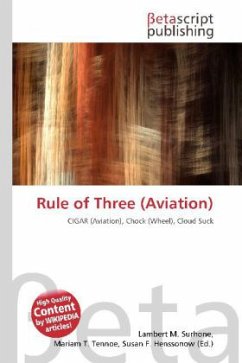Please note that the content of this book primarily consists of articles available from Wikipedia or other free sources online. The rule of three in aviation usage refers to the "3:1 rule of descent", in that 3 miles of travel should be allowed for every 1000 feet descent. In the early days of aviation, few aircraft were pressurized. A pilot who waited until the last minute, then descended rapidly, would cause his passengers the discomfort of rapid pressure changes on their eardrums. He would not be very popular. Transport pilots adopted this formula to assure a slow, steady, and comfortable descent profile for their passengers. Many aircraft had a cruise speed between 100 and 120 MPH in those days. Three miles would be traveled in about 1.5-1.8 minutes, resulting in a rate of descent of about 550 660 feet per minute. That was about as fast as passengers could comfortably adapt to the changing pressure on their eardrums. But many pilots would use a standard 300 feet per minute descent rate because doing so almost passes without notice among passengers.
Bitte wählen Sie Ihr Anliegen aus.
Rechnungen
Retourenschein anfordern
Bestellstatus
Storno








